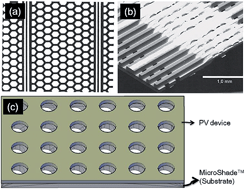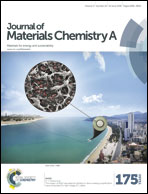Comprehensive review on material requirements, present status, and future prospects for building-integrated semitransparent photovoltaics (BISTPV)
Abstract
Photovoltaics (PV) is a potential alternative to the world's quickly depleting fossil fuel and can be a mean of curtailing green-house gas emissions as well. In regions in which there is a shortage of free land and no fossil fuel reserves, building-integrated photovoltaics with an additional attribute of semitransparency (BISTPV) can help to realize sustainable economic growth. The net electricity savings in dwellings and commercial edifices can be substantially enhanced by using BISTPV shrewdly. In addition to building applications, semitransparent (ST) solar cells can be used in yacht hatches, signboards on express-ways, automobiles, electronic displays, and other applications. It is anticipated that in the foreseeable future, dye-sensitized solar cells (DSSCs), amorphous silicon (a-Si:H) solar cells, and chalcopyrite solar cells based BISTPV modules will replace aesthetically repulsive c-Si-based ST modules, which are currently the key player in the BIPV market. DSSCs are superior to a-Si:H and chalcopyrite-based PV in terms of the appropriate choice of dyes, for which wavelengths that have a low eye sensitivity factor can be selectively harnessed. The transparency, or ability to see-through, can be further increased by making use of highly transparent photoanodes and counter electrodes. However, the stability issues that are associated with DSSCs have halted their propagation to the BIPV market. In contrast, ST a-Si:H solar cells have been well developed on a laboratory scale, and ST panels made by various companies are available on the market. Apart from ST DSSCs and a-Si:H solar cells, which have evolved considerably, chalcopyrite STPV has only recently started the journey of its development on a laboratory scale although it has a large potential for BISTPV. Therefore, considerable efforts must be made for it to emerge in the BIPV market. This article will present a detailed review of the material requirements for fabricating ST dye-sensitized-, amorphous silicon (a-Si:H)-, and chalcopyrite-based solar cells, especially for BIPV applications. Furthermore, the present status and future prospects of semitransparent photovoltaics (STPV) and strategies to enhance photocurrent in STPV will also be discussed.


 Please wait while we load your content...
Please wait while we load your content...